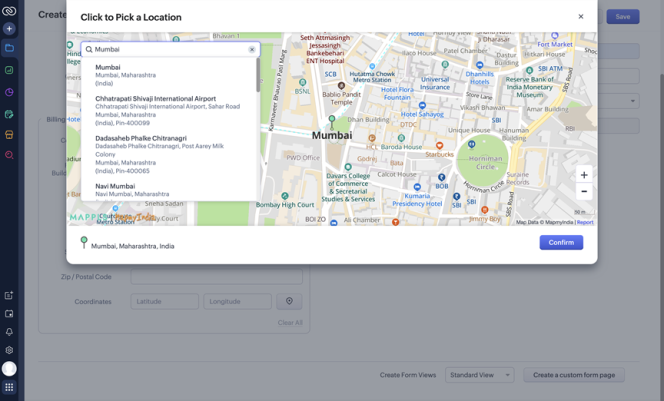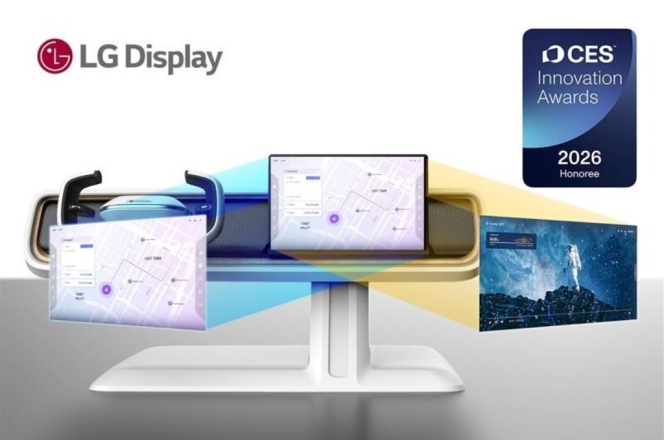- 2025 season
- 75th anniversary year
- Formula 1 sport
- progress
- sustainability
- social commitments
- 2024 Impact Report
- Net Zero
- goal for 2030
- Formula 1 sport
- environmental front
- significant investments
- Sustainable Aviation Fuel (SAF)
- ultra-efficient logistics strategy
Formula 1 Reports On Sustainability And Social Progress Across 2024 Season
- By MT Bureau
- March 13, 2025

Returning for the 2025 season and 75th anniversary year this weekend, the Formula 1 sport has released a round-up on the progress made towards its sustainability and social commitments last year. In the form of 2024 Impact Report, which will be released later this year, the progress made towards its sustainability and social commitments with Net Zero as the goal for 2030, the Formula 1 sport has – on the environmental front – made significant investments in Sustainable Aviation Fuel (SAF) as part of its ultra-efficient logistics strategy.
It has invested significantly in SAF as it delivers an estimated 80 percent reduction in associated carbon emissions per flight compared to the use of conventional aviation fuel. The combined investment in SAF with Global Partners DHL and Qatar Airways reduced total related emissions by more than 8,000 tCO2e (tonnes of carbon dioxide equivalent), an approximate 19 percent reduction in related emissions– compared to traditional aviation fuel – for the air freight charter programme operated by Formula 1 across the flyaway events of the 2024 season.
The delivery of innovative low-carbon energy generation systems using renewable sources such as hydrotreated vegetable oil (HVO), biofuel, solar panels, and battery began testing in 2023. Last year, they were used at the Red Bull Ring, the Hungarian Grand Prix and the Italian Grand Prix in Monza. For the 2025 season, a programme will be rolled out to reduce more than 90 percent of carbon emissions at all European Grands Prix in key areas such as the Paddock, Pit Lane, and Event Technical Centre.
As part of the sport’s ongoing efforts to reduce carbon emissions associated with travel and logistics, improvements were made to the geographical flow of races around the world in 2024. This included agreement from the Promoter in Japan to move the Suzuka race back from September to April to fit with the Asia Pacific segment of the schedule, while Azerbaijan took its slot to align with Singapore. The organisers of the Qatar Grand Prix also approved a move to the penultimate spot in the schedule, back-to-back with Abu Dhabi. From 2026 the Canadian Grand Prix will be hosted earlier in the year and the Monaco Grand Prix will take place on the first full weekend in June, consolidating the European leg of the F1 season into one period, removing an additional transatlantic crossing and delivering significant associated carbon reductions.
Last year, F2 and F3 cars ran on 55 percent Aramco advanced sustainable fuel and the FIA medical and safety cars operated on 40 percent of it. In 2025, the F2 and F3 cars will move to 100 percent use of it, ahead of the Formula 1 cars adopting the fuels in 2026 in the new hybrid engines that will take to the circuit next year.
The technology has implications for the automotive industry and existing petrol cars, as the fuel developed by Formula 1 will be a ‘drop-in’ that can be used in road cars without modification and will serve as a sustainable alternative of global benefit.
Throughout the 2024 season, the cars all operated with FSC approved Pirelli tyres, which means the natural rubber in the type complies with the FSC’s strict standards for sustainable forestry. Some 80 percent of promoters powered aspects of their events using alternative energy sources such as solar panels, green tariffs, and biofuels. Over 90 precent of promoters began offering greener ways to travel to the race.
On the social commitments front, the Formula 1 sport – in 2024 season – marked the fourth year of its F1 Engineering Scholarships programme, which would support 50 underrepresented students by the end of 2025. The Scholarship covers the entire cost of the student’s tuition, together with living expenses for the full duration of their degree, enabling them to focus on their studies. It also offers them support to set them up for their careers, including work experience with one of the ten Formula 1 teams, as well as career workshops and mentoring.
Formula 1 also launched the global education programme ‘Learning Sectors’ in collaboration with the British Council to inspire young learners in Brazil, India, South Africa, and the UK to pursue STEM subjects. The year long programme kicks off this year with 130,000 students in 700 schools.
F1 Academy, the sport’s female-only series, competed alongside Formula 1 at seven events last year, completing 21 races. Through F1 Academy’s partnership with the international karting series, Champions of the Future, female participation in racing increased from five percent in 2023 to 25 percent in 2024.
The sport also continued with hosting apprenticeships and workshops, such as The Next Grand Prix challenge in association with the Social Mobility Business Partnership (SMBP) charity, which challenges students aged between 16 and 18 from a breadth of backgrounds to assume a business leadership role and deliver a fictional bid for a new Formula One World Championship location.
Ellen Jones, Head of ESG at Formula 1, said, “Innovation and community drove Formula 1's work in 2024. We are thrilled to outline our progress and continued work in this space. Formula 1 as a sport is uniquely positioned to take action through our global reach and technological leadership.”
MapmyIndia And Zoho Announce Integration For CRM Users
- By MT Bureau
- November 26, 2025

MapmyIndia Mappls, a digital mapping and geospatial technology company, and Zoho, a technology company, have announced a collaboration to integrate two MapmyIndia features directly within Zoho CRM. The features being integrated are Address Capture and Nearby Lead Finder.
The integration allows Zoho CRM users to: capture verified addresses, visualise customer locations, discover potential leads in nearby areas and optimise sales routes. These functions are powered by MapmyIndia’s mapping platform.
Rakesh Verma, Co-Founder, Managing Director & Group Chairman, MapmyIndia Mappls, said, “This partnership between MapmyIndia and Zoho is a true blue Swadeshi celebration – two Indian innovators and leaders in their respective fields - coming together to deliver cutting-edge, homegrown technology that is world-class. MapmyIndia Mappls Address Capture and Nearby Lead Finder capabilities will help Zoho CRM users across India to work smarter and sell better, while keeping all data and innovation safe within India. I am confident that this partnership will boost collaborations amongst Indian tech companies creating a sympathetic ecosystem towards the realisation of an Atmanirbhar, Viksit Bharat.”
Mani Vembu, CEO, Zoho, said, "At Zoho, we believe that true technological progress begins with self-reliance. Building deep-tech R&D from India has always been one of our foundational pursuits, driven by the immense talent and creativity that thrive in the country. Our partnership with MapmyIndia embodies this vision, uniting homegrown expertise in business software and digital mapping to deliver solutions that are powerful, privacy-focused and proudly indigenous. This integration empowers Indian businesses by combining business intelligence with spatial intelligence, giving field teams the location-aware insights they need to better serve their customers."
Toyota Kirloskar Motor Opens Experiential Museum In Bengaluru
- By MT Bureau
- November 24, 2025

Toyota Kirloskar Motor (TKM) has unveiled the Toyota Experiential Museum (TEM) in Bengaluru, which it said is a new cultural and lifestyle hub for the company. The space combines Indian philosophy with Japanese culture and technology.
Located on the ground floor of the Phoenix Mall of Asia, TEM is spread across 8,200 sq ft and offers a five-senses experience, blending Japanese minimalism with Indian warmth through visuals, sounds, scents, textures and flavours.
Tadashi Asazuma, Deputy Managing Director, Toyota Kirloskar Motor, said, “At Toyota, our vision of creating ‘Happier Paths Together’ goes beyond mobility – it is about inspiring experiences that connect people, cultures, and emotions. With TEM, we hope to offer a truly unique experience that embodies this spirit.
In India, we found inspiration in the practice of Sadhana – the mindful pursuit of inner balance and fulfilment. TEM is where the Japanese culture and values of precision, serenity, and respect for nature beautifully align with the spirit of Sadhana, making TEM a meaningful blend of both. Designed to engage the senses and spark reflection, it brings together art, technology, and craftsmanship to inspire mindfulness, especially amongst the youth.”
The museum features minimalist interiors and distinct aesthetics designed to spark curiosity, inviting guests to explore at their own pace. The journey begins with a mirrored and rhythmic experience of the changing seasons common to Japan and India, unfolding through infinite projections of light, colour and motion. It then rises into a celebration of shared passion, featuring an audio-visual collaboration with DRUM TAO. A display includes a water curtain encircling a car draped in satin.
A design cafe offers a range of merchandise blending heritage with contemporary lifestyle, celebrating simplicity and craftsmanship.
The TEM cafe features a curated menu that blends the Japanese tradition of matcha with Indian flavours. Highlights include the India-inspired mango infusion.
- Maruti Suzuki India
- Maruti Suzuki Innovation Fund
- Ravity Software Solutions
- Sociograph Solutions
- Amlgo Labs
- Hisashi Takeuchi
- Vikas Rungta
Maruti Suzuki India Invests INR 20 Million In Ravity Software Solutions
- By MT Bureau
- November 21, 2025

Maruti Suzuki India (Maruti Suzuki) has announced an investment of nearly INR 20 million to pick up 7.84 percent stake in Bengaluru-based mobility insights start-up Ravity Software Solutions. The start-up claimed to be a global platform for AI-driven connected mobility intelligence, which transforms vehicle data into business value.
This marks the automaker’s third such move through ‘Maruti Suzuki Innovation Fund’, which makes strategic investments in innovative and high-potential start-ups that can support Maruti Suzuki India’s operations.
The company made its first investment of INR 20 million in Sociograph Solutions in June 2022, followed by the same amount in Amlgo Labs in March 2024.
Hisashi Takeuchi, Managing Director & CEO, Maruti Suzuki India, said, “Aligning to our core value of keeping customer at the core of our business, we are focused on enhancing vehicle ownership experience. In the age of open innovation, we strive to co-create business solutions with specialized entities operating in the particular field. Startups are ideal partners as they bring agility, fresh thinking, and cutting-edge solutions, to support our goal of ensuring customer delight. Our investment in Ravity Software Solutions will enable us to elevate customer experience through data-driven insights. We have been associating with startups since 2019 under our Maruti Suzuki Innovation programs. Through this initiative, we are investing in a culture of innovation, building strategic partnerships, and unlocking new opportunities, in line with Government’s ‘Startup India’ initiative to promote entrepreneurship in the country.”
Vikas Rungta, Founder, Ravity Software Solutions, said, “It is an honour to be associated with an industry leader like Maruti Suzuki, whose name is synonymous with bringing personal mobility to millions in India as well as across the globe. An automobile major like Maruti Suzuki partnering with a startup speaks volumes about its forward-thinking mindset, humility, and openness to learn and collaborate to explore new ideas. With our excellence and expertise in AI, analytics and mobility, we are committed to upholding the trust Maruti Suzuki has placed in us. We believe that the high complementarity of our strengths: Maruti Suzuki’s scale of business and our agility and entrepreneurship, will further enhance customer experience and delight.”
LG Display Wins Two CES 2026 Innovation Awards For Automotive Display Technology
- By MT Bureau
- November 21, 2025

LG Display has secured two CES 2026 Innovation Awards from the Consumer Technology Association (CTA) for two automotive display innovations: Dual View OLED and Under Display Camera-infrared (UDC-IR) OLED.
Both products were honoured in the In-Vehicle Entertainment category for delivering space efficiency, superior picture quality and high standards of safety.
The Dual View OLED solution allows a single automotive display to show different content based on the viewing position. For example, the driver can view navigation while the front passenger streams content. Optimised pixel structure ensures the driver’s touch operation does not interfere with the passenger’s entertainment. The product utilises a Tandem OLED device structure for picture quality and operates reliably in environments ranging from -40deg C to 85deg C.
The UDC-IR OLED jointly developed with LG Innotek, is claimed to world’s first full-screen automotive display to conceal an in-screen driver-monitoring camera. LG Display developed advanced algorithms that make the camera hole invisible from the driver’s viewpoint. The camera integrates LG Innotek’s high-resolution IR camera and image-enhancement software to ensure accurate driver monitoring, which is becoming mandatory due to global safety regulations.
LG Display will showcase these solutions at a dedicated booth at CES 2026. The company has consistently won CES Innovation Awards, previously honoured for its Thin Actuator Sound Solution (CES 2023) and its 57-inch Pillar-to-Pillar LCD (CES 2024).






Comments (0)
ADD COMMENT